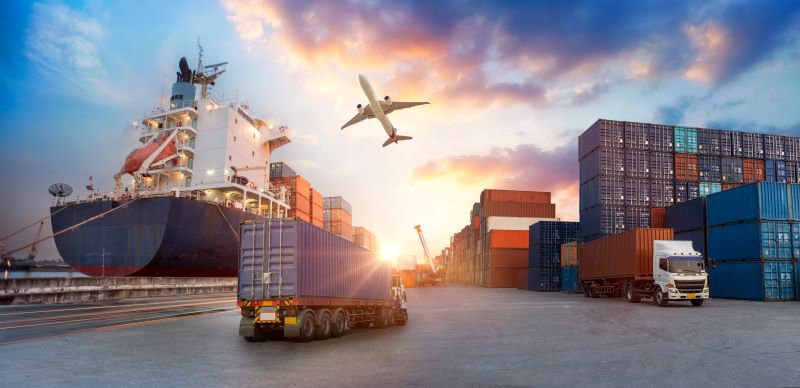How Technology is Changing the way Transportation and Logistics Companies Operate
Published on by Bryan Gayhart in Technology, Transportation / Logistics

Recent advances in technology have accelerated the way that business are evolving at an unprecedented rate. The dawn of 5G and advances in communications technology have sped up expectations on both the business and consumer ends of business: Companies like Amazon have completely overturned decades-old business models and core competencies by building a data framework and distribution network that enables delivery of a product in as little as an hour after a customer places the order in some markets, and same-day delivery is becoming the new normal for many purchases.
As technology continue to evolve, the industry benefits from reduced cost and minimization of errors, increasing supply chain productivity, and the overall benefits to businesses globally. It is critical to your business’s future to figure out how technology will play a part in your operations before it becomes readily available, and your opportunity for competitive advantage is lost.
5 Key Technology Trends for Transportation and Logistics
Here are five emerging technology trends that you should pay attention that will continue to have a profound impact on the transportation and logistics industries.
1. Drones and Self-Driving Trucks
A society where computers on wheels drive us from one place to another and we receive packages from unmanned aerial vehicles might sound like something out of a science fiction plot, but that is the reality of where we are heading. Autonomous vehicles are already a reality with trucks not far behind. Companies such as Embark and Uber have already made long hauls using autonomous trucks, and Tesla released their version earlier this year. While they aren’t yet completely driverless, a driver in the passenger seat only has to monitor the computer, marking a huge step in this breakthrough technology that has the potential to increase efficiency in the delivery process – and potentially loosen the stranglehold of the ongoing driver shortage.
Amazon recently announced that packages could begin to be delivered right to our doorsteps by drones, with their service Amazon Prime Air. Drone delivery is still a few years out while we figure out regulatory measures and associated costs, but the thought of not having to wait days or sit around during an imprecise delivery window watching for a critical delivery could be a major factor in operations management.
2. Radio Frequency Identification (RFID) and the Internet of Things (IoT)
How many years ago was it when we marveled at the ability to reply to an email from our phone? Today, many handheld devices are made with sophisticated Wi-Fi capabilities and sensors that enable us to control things from lights and ceiling fans to cars. The easy access to increasingly powerful wireless communication networks connects everyone to everything, which is why technology professionals have coined the term the Internet of Things (IoT).
IoT is creating a myriad of opportunities for supply chain management, such as reducing costs and delays by avoiding risks. Sensors that are built into cabs, cargo ships, and trains connect to computer systems or dispatchers who monitor location and status. These sensors transmit the information to your team, providing insight into risks and efficiencies that otherwise might not be seen. Although the IoT isn’t an entirely new concept, it continues to impact the future of logistics, allowing for a more accurate in-transit visibility and delivery of goods.
Radio-Frequency Identification (RFID) technology, which has already been in use for a few years, is a popular way to track inventory and save on labor cost. A sensor or tag is placed on the product that emits radio waves, and the data is received and processed by the company. Barcodes are a similar and more familiar technology to RFID tags, but the superior speed of information delivery and data processing of RFIDs is more appealing to businesses and the way technology is evolving. Today, many companies use RFID tags in distribution warehouses to monitor containers. Other industries have also implemented RFID tags, such as the apparel industry and major theme parks.
3. Social Media
The power and reach of social media is optimizing the logistics industry and operations as a whole. Social media platforms are becoming the easiest and most efficient way for companies to communicate with customers, conveying urgent information instantly, responding to customers quickly, and sharing news freely and easily.
According to social media manager Hootsuite, 59% of Americans who have a social media account agree that customer service via social media has made it easier to get questions and concerns resolved. Here at Barnes Dennig, we use LinkedIn, Facebook, and Twitter to spread thought leadership, news, and updates to our clients and friends.
4. Shipment Tracking Systems
When customers booked shipments in the past, they received an estimated delivery window, and then were left to wait until the shipment arrived, unless they decided to make a phone call, which may or may not have been able to help.
Today, software advances and the Internet allow customers access to shipping and tracking systems anytime from anywhere. Not only does this enhance the user experience, but it also can save time and money for your company. Common systems feature shipment notifications and messages, customer accounts with specific order information, and customizable reporting to identify efficiencies and weaknesses.
5.Enhanced Global Positioning System (GPS) Accuracy
Remember the days when you relied on directions printed from the computer before you left the house, or when you had to pull over to consult a road atlas? Now almost every car and device uses Global Positioning Systems (GPS), whether built-in to the vehicle itself, or on our mobile devices. The accuracy of this technology and the devices that use it has improved dramatically throughout the years, not only helping frustrated, lost drivers but also improving the supply chain. The advanced accuracy of GPS allows for satisfied customers and increased productivity by tracking trucks’ locations and improving delivery time through access to updated traffic data.
As customer expectations rise, technology will be key to helping ensure your company is able to deliver information as efficiently as your products. Make sure you’re making the most of the opportunities and creating competitive advantage for your business.
Additional Resources
The Barnes Dennig team works with transportation and logistics companies of all sizes, with our dedicated professionals drawing on experience with some of the largest transportation and logistics companies in the country to help you operate more efficiently and enhance your bottom-line business results.
Contact us here to talk to one of our experts today – and find out how we can help you create a better tomorrow.
